Gold medallist from Sir JJ School of Art, only woman in Progressive Artists’ Group—Mumbai had a lasting influence on Bhanu Athaiya. A new exhibit in Goa traces the legacy of the modernist painter and pioneering costume designer
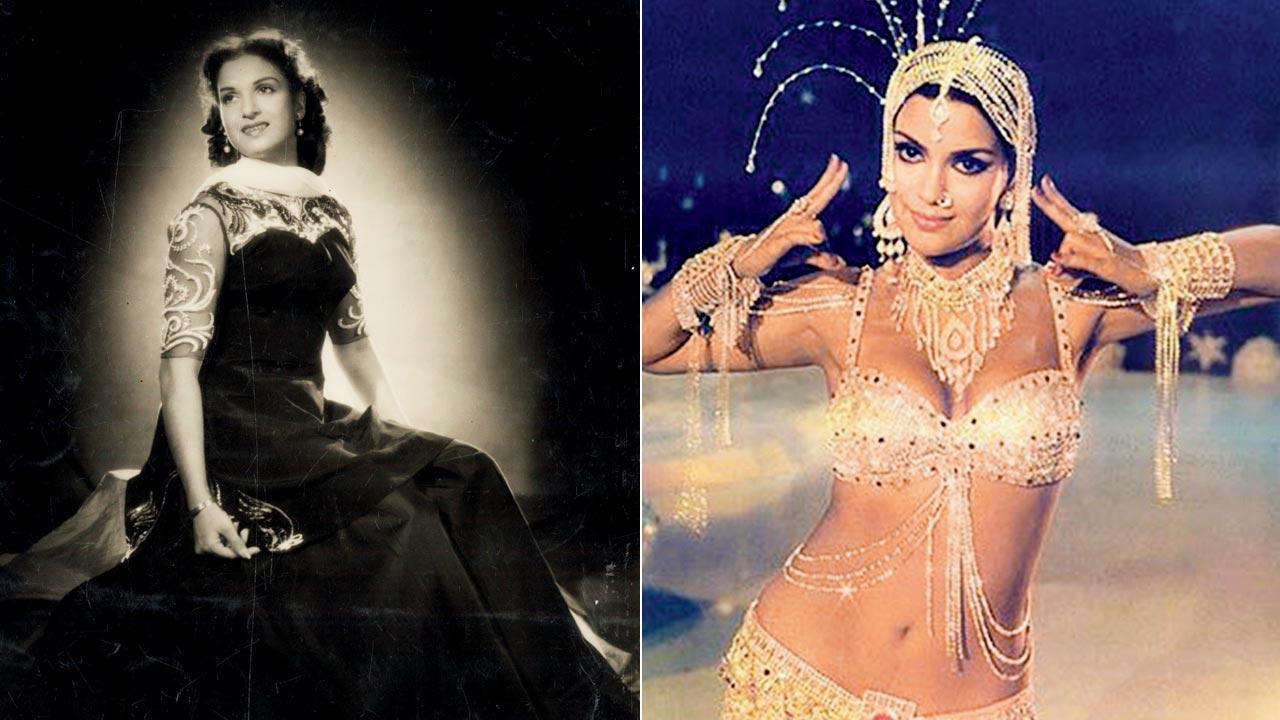
Bhanu Athaiya’s first film project with actor Kamini Kaushal was Aas (1953). This Western outfit had “quite a risqué bodice for those times” comprising a transparent net base with scroll embroidery and a sweetheart cut neckline. Pics Courtesy/Prinseps; (right) Bhanu Athaiya’s appreciation for Indian textiles, drapes and silhouettes finds expression in this costume designed for Zeenat Aman in Satyam Shivam Sundaram (1978)
 Bhanu Rajopadhye Athaiya is regarded as the most important costume designer India has produced in the last 60 years, a creative trailblazer who put India on the world map when she won an Oscar for Gandhi in 1982. (She shared the honour with British designer, John Mollo.)
Bhanu Rajopadhye Athaiya is regarded as the most important costume designer India has produced in the last 60 years, a creative trailblazer who put India on the world map when she won an Oscar for Gandhi in 1982. (She shared the honour with British designer, John Mollo.)
This was the woman who gave us some of the defining styles of the era: Mumtaz’s pre-draped saree which was an upscale of a Santhal tribal female drape, in Brahmachari (1968); the sweetheart neckline (her first client, Kamini Kaushal wore it in Aas, 1953) and the stretch churidar (Muqaddar ka Sikandar, 1978, as Rekha danced, you could see the subtle contours, enhanced by the stretchability of the chiffon churidar). Athaiya helped spark a quantum shift in film costume design with her ability to speak up for the female point of view. “Bhanu ji was ahead of her time; she could create clothes that made you look sensual yet not vulgar; something that enhanced your figure, like the chiffon costumes she designed in Do Anjaane [1978],” actor Rekha writes about her “teacher, mentor, creative guide, and friend”.
ADVERTISEMENT
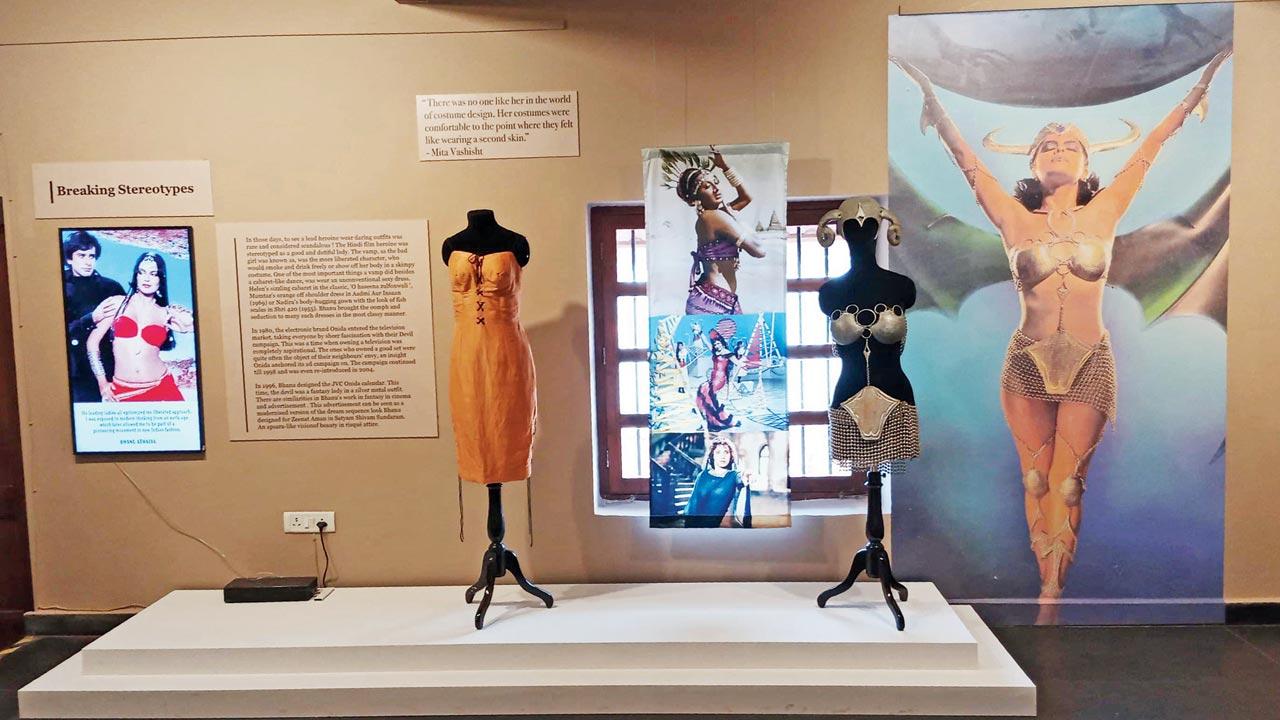 Bharat Through the Lens of Bhanu Athaiya is on at The Aguad in Goa
Bharat Through the Lens of Bhanu Athaiya is on at The Aguad in Goa
Athaiya’s genius was in capturing the energy and iconoclastic spirit of women in independent India, and giving it a visual expression. “She was conscious of protecting them from the male gaze, whether it was Helen’s Western cabaret costumes in films like Teesri Manzil (1966), or the beloved song, Aaj phir jeene ki tamanna hai from Guide (1965) where Mummy stitched Waheeda Rehman’s light blue saree [to her blouse] so that she wouldn’t have to worry about her pallu falling,” Radhika Gupta, Athaiya’s daughter, tells mid-day.
In 1958, late theatre director Ebrahim Alkazi invited Athaiya to design for the first travelling promotional fashion show in independent India for Calico Mills. “But she always said fashion was not a part of her. Fashion is about the dress. Costumes are about the character. She made a clear distinction between the two,” says Gupta, adding that Athaiya was a one-woman force, so deft that she could draw a costume design in minutes, source her own fabrics and jewellery, and manage a team of tailors.
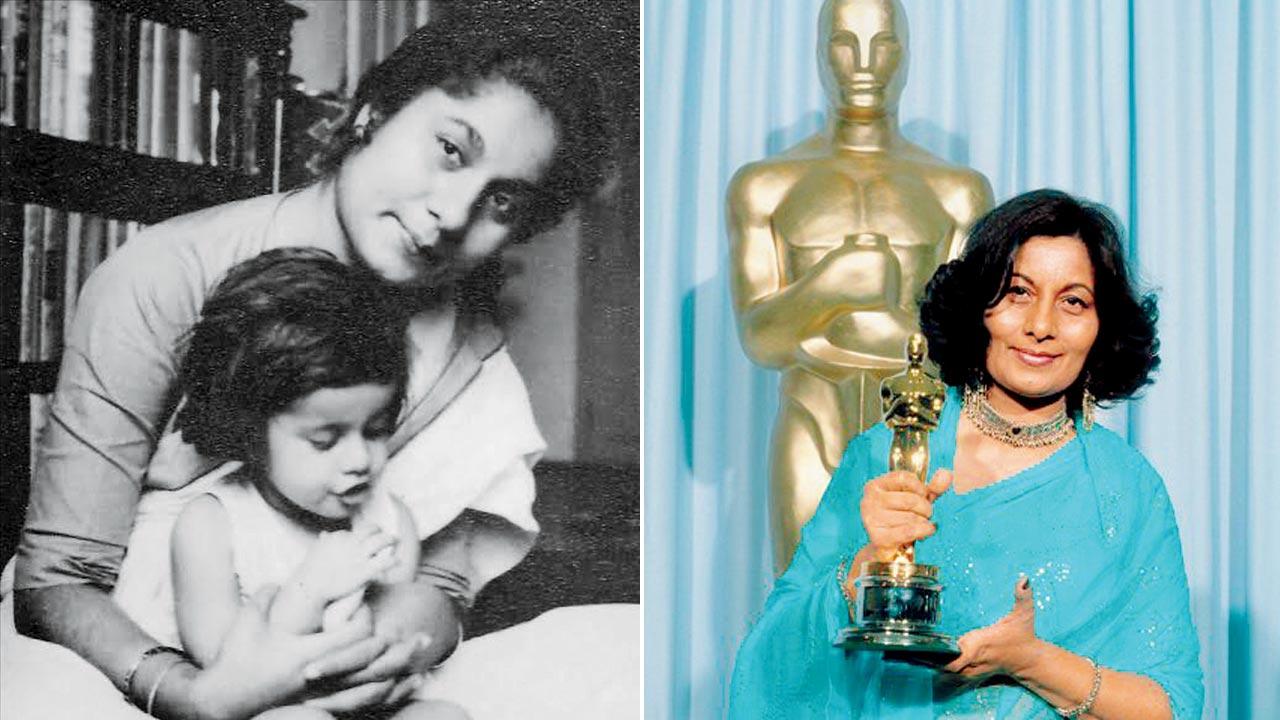
Bhanu Athaiya with daughter Radhika Gupta; (right) Bhanu Athaiya received the Oscar for Gandhi in 1983
A just-launched exhibition titled, Bharat Through the Lens of Bhanu Athaiya, runs through January 1 at The Aguad in Goa, and functions as a swooning nostalgia for Athaiya’s furious talent and unfettered imagination. Organised by auction house Prinseps, it celebrates Athaiya’s work as a fashion illustrator at women’s magazine, Eve’s Weekly; costumes for local theatre productions; her pioneering designs including the iconic Amrapali outfit—bustier and dhoti drape with dupatta worn by Vyjayanthimala; and the traditional Kathiawadi outfit from Gandhi. Discoveries like the gold medal she earned at the Sir JJ School of Art, her advertising work for Onida and Air India, and personal heirloom textiles including Paithanis, chanderis and Benarasis which she inherited from her mother and grandmother, are also on display.
Preserving costumes for posterity has not been a priority in Bollywood, which is focused heavily on the future. The show’s curator Brijeshwari Kumari Gohil, vice president at Prinseps and director Indrajit Chatterjee, and its conservator Gupta have, in effect, rescued, restored, and annotated a lost gospel.
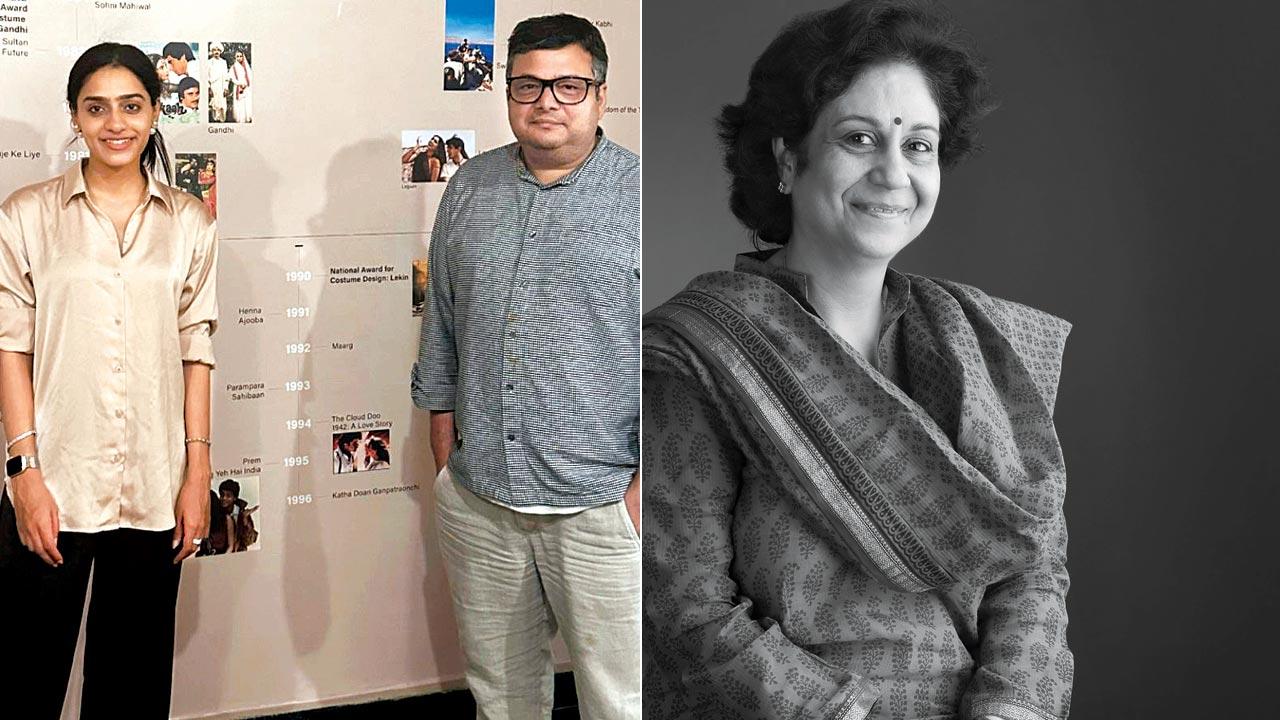 Brijeshwari Kumari Gohil, Indrajit Chatterjee and Gayatri Sinha, art editor, critic and curator
Brijeshwari Kumari Gohil, Indrajit Chatterjee and Gayatri Sinha, art editor, critic and curator
Before Athaiya passed away on October 15, 2020 at 91, Gupta reveals that she was desperately eager to donate the sketches, paintings and textiles to the Government Museum. “They said, leave stuff with us and we will see what we can do. Mummy said, ‘I’d rather let it rot than leave my life’s work without knowing what they plan to do with it.’ Maybe the time wasn’t right then,” Gupta thinks. New Delhi’s Kiran Nadar Museum of Art acquired most of Athaiya’s art.
Athaiya’s formidable range of work includes glimpses of India’s past; a modern relic really of our changing culture, society and identities. “From growing up in Kolhapur to her artistic growth in Bombay and eventual shift to Bollywood, her personal journey is also a chance to view India’s shaping post-Independence. I am hopeful that a museum will show interest, so that I can focus on Mummy’s wish to create a trust that offers art scholarships to girls from Kolhapur.”
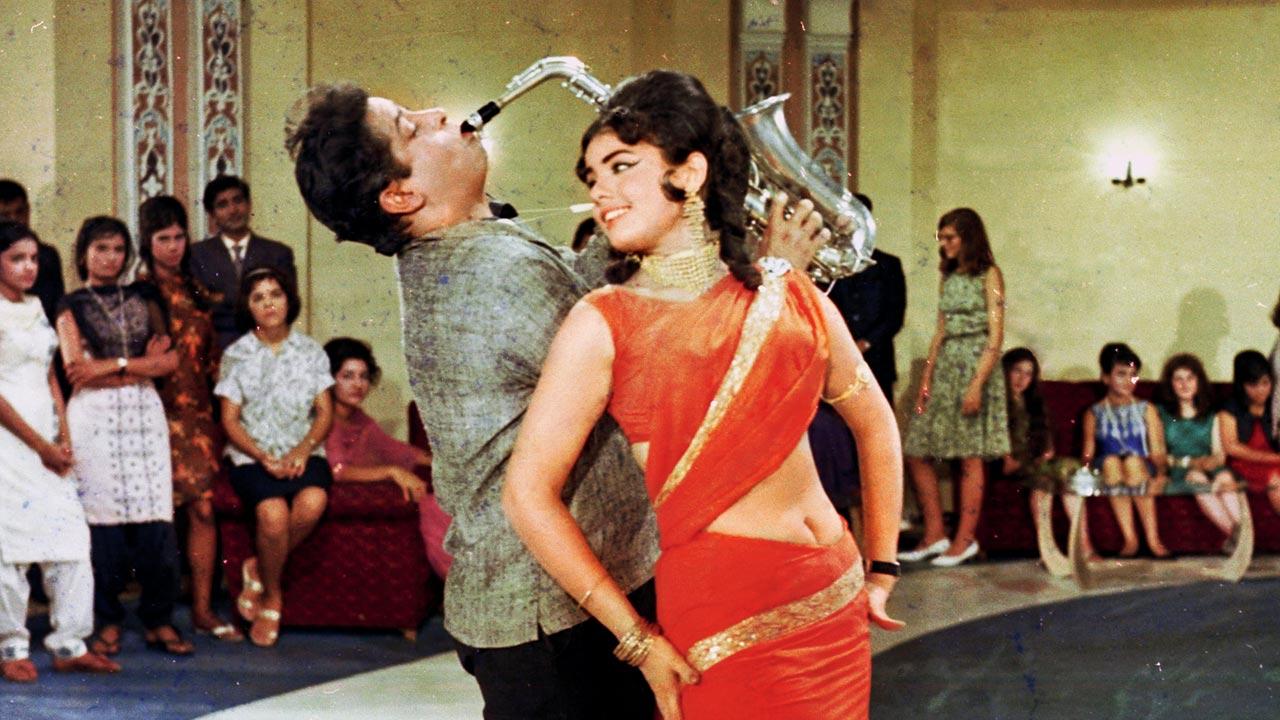
Actor Mumtaz wears an orange stitched-draped saree in Brahmachari (1968)
The exhibit also aims to reveal a multi-faceted creative virtuoso whose talent sat between award-winning costume design and modernist painting.
From Maqbool Fida Husain, Sayed Haider Raza, Francis Newton Souza to Krishnaji Howlaji Ara, Sadanand K Bakre and Hari Ambadas Gade, they are all up there as the original six members of the Bombay Progressive Artists’ Group, who decentered modern art for the new free India in 1947. “The Progressives stand out in Indian art history as an influential group whose appearance coincided with the Partition of India, and which brought a stunning new internationalism to Indian art,” explains art editor, critic and curator Gayatri Sinha. “They stand out as a group that included Christian, Dalit, Muslim and Hindu members who came together to demonstrate a break with the past, imagining Bombay and its environs as a subject.”
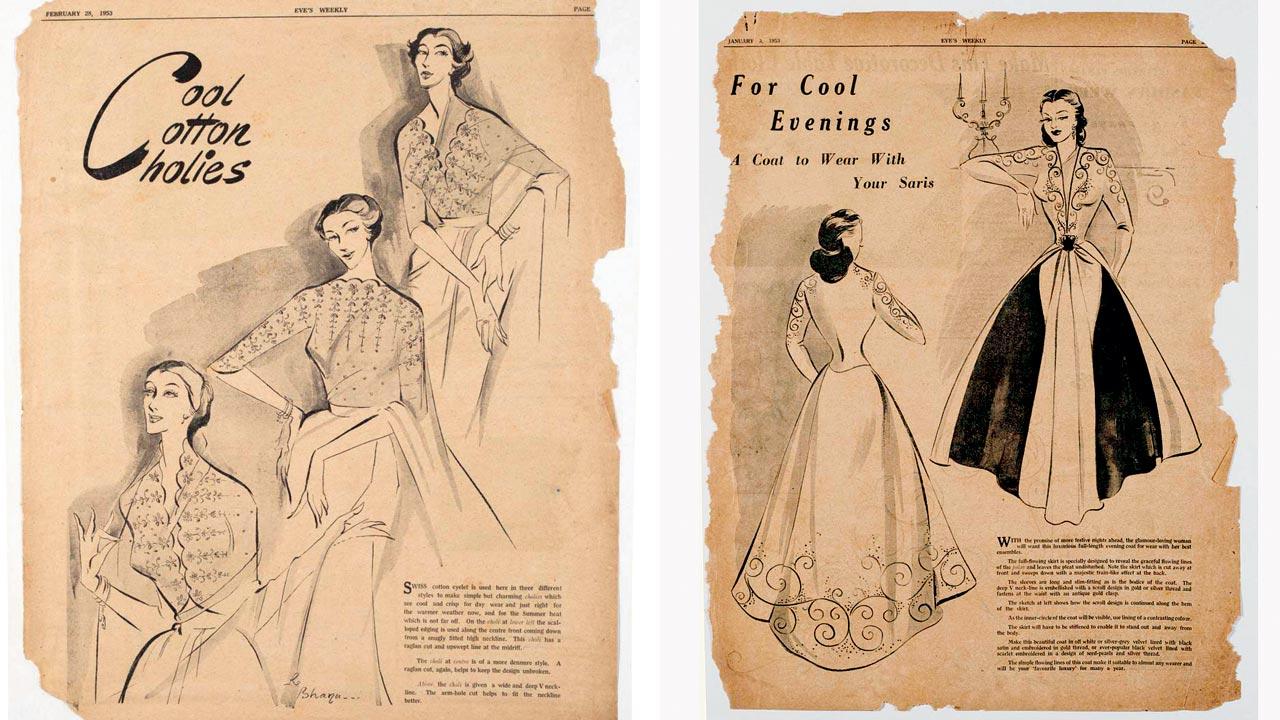 Bhanu Athaiya worked as a fashion illustrator at women’s magazine, Eve’s Weekly; her sketches are on display at the exhibit
Bhanu Athaiya worked as a fashion illustrator at women’s magazine, Eve’s Weekly; her sketches are on display at the exhibit
Prominent in PAG’s 1951 exhibition at Artists’ Centre, Kala Ghoda, was Athaiya; an award-winning student from the Sir JJ School of Art and the only woman in the dynamic group. On December 16, as part of the show calendar, Sinha will host a discussion on India at the cusp of Independence in a talk titled, Emergent Influences of the late 1930s and 40s in Art Cinema and Design: The Making of Bhanu Athaiya.
Athaiya’s career as a modernist painter was short. “I was advised by my senior artist friends to continue painting […] I was faced with a big decision, but to me it was clear I needed to stand on my own feet, and fashion designing was the more practical option. I have never had regrets about this choice,” is one among many anecdotes she shares in her 2010 book, The Art of Costume Design. Athaiya, in fact, was working on her second book of sketches but didn’t get around to finishing it.
Sinha thinks it is extraordinary that she migrated seamlessly from art to design, that she kept refining her craft in an industry where careers are notoriously short. She designed for about 240 films, moving from a tragedienne like Meena Kumari to dancing queen Helen. “All of this came out of a modest studio with little fanfare. If we have a collective sense of what constitutes beauty, we must recognise that in the main it was given to us by Bhanu Athaiya,” Sinha says.
 Subscribe today by clicking the link and stay updated with the latest news!" Click here!
Subscribe today by clicking the link and stay updated with the latest news!" Click here!







